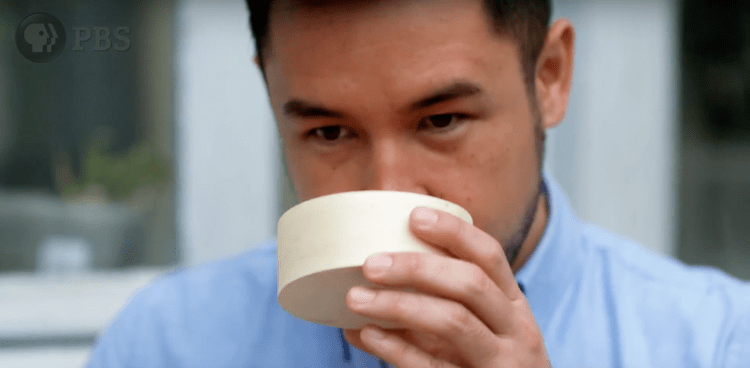
Ah, Époisses. For some, this washed-rind cheese is a no-go, mainly due to its pungent, stinky-feet odor. But for those who are able to get past its stench, they’ll be rewarded with complex, savory, meaty flavors that are an absolute joy to taste.
So how can something that smells so unappetizing taste so good? In an upcoming episode of the new PBS series “Food: Delicious Science,” co-host James Wong visits France to find out.
It all has to do with “backward smelling.” Tastes are sensed through the smell detectors at the back of the nose, and the brain essentially interprets these aroma compounds differently than when a food is smelled through the nose. Wong initially describes Époisses’s aroma as “intense [and] sulfur-like,” but the flavor as “sharp, garlicky, [and] eggy.” (Spoiler alert: He really likes eating it.)
The “A Matter of Taste” episode airs Wednesday, May 24 at 10 p.m.
Video courtesy of PBS



